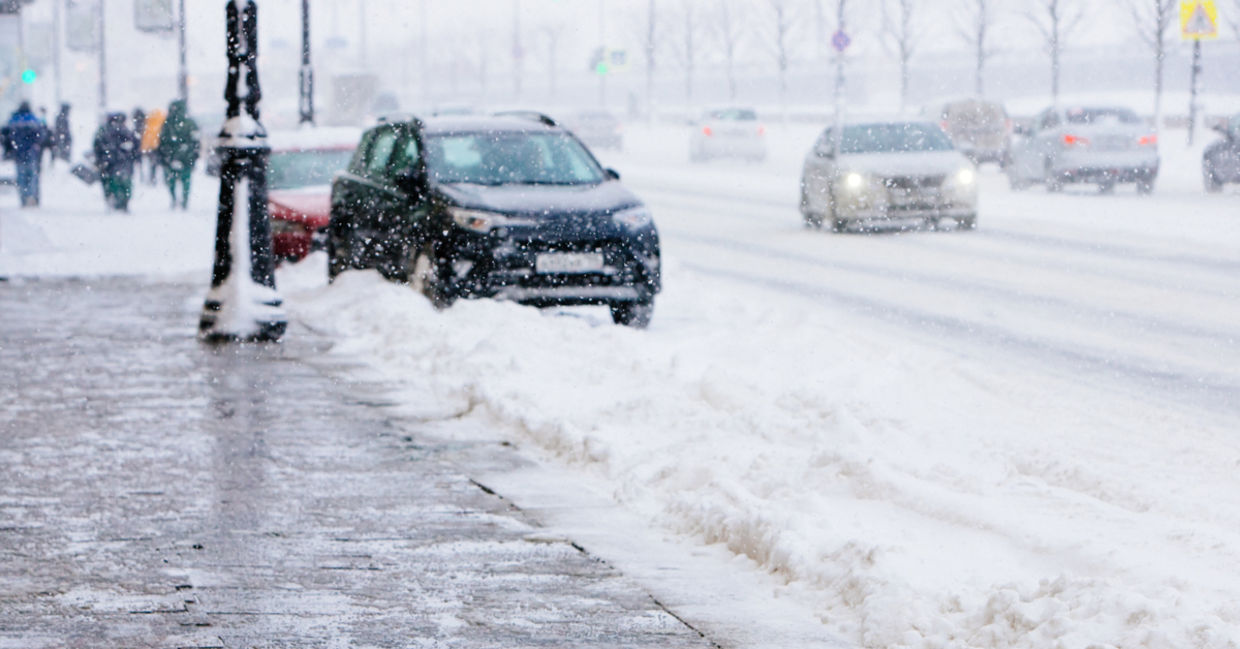
(DimaBerlin / Shutterstock.com)
Winter snow is really beautiful to watch, especially from your warm cozy home. And when it is time to go outside, don’t forget to put on your warm coat, gloves and hat and be careful out there because walkways and roads can be slippery.
Municipalities in the US, keep the roads open by plowing and de-icing to make travel safe. But salting or using chemical de-icer on roads has a downside, it is very polluting as well as destructive to the roads themselves. That’s why a team of researchers from Washington State University in Pullman are developing a sustainable solution using biowaste from grape skins and other agricultural products.
Every year, according to a news release from the university, 27 million tons of sodium chloride that do not degrade in the environment are used on US roadways. Other chemical de-icers are highly corrosive to the asphalt and to cars and trucks, as well as to aquatic species when the watery runoff from the roads enter our waterways.
While working to develop a greener method, WSU researchers used chemicals made from natural fermentation and other natural processes. Xianming Shi, associate professor in Civil and Environmental Engineering said in the press release that their novel process did not produce any waste. It is also cheaper to produce and use.
He first started thinking about using biotech to make a safer de-icer several years ago when the Alaska Department of Transportation asked him to develop locally sourced brine solution.
“The beauty of this approach is that it allows us to diversify,” he said. “We can use this same platform technology in different regions of the country but choose a different agricultural product, depending on what source of waste is available.”
Shi and graduate student Mehdi Honarvar Nazari found that their de-icer made from the grape biowaste actually melts ice faster than any de-icer commercially available while not damaging roadways or posing any threats to nearby waterways.
“We delivered a more sustainable solution because we’re introducing less chlorides into the road operations and are achieving comparable or better performance,” Shi said. “It’s one step in the right direction.”
The work was published in the December issue of the Journal of Materials in Civil Engineering.
There are increasing innovative uses for biowaste. A farm cooperative in upstate New York is using cheese scraps from its dairy and other agricultural byproducts to power its business.
Hurtigruten, a Norwegian cruise, ferry, and cargo operator, is planning on converting its entire line to using biogas made from scraps from the fishing industry by 2021. Of course, the dead fish will have to be converted into liquefied biogas (LGB) first.
And, the city of Toronto is planning to convert their fleet to biogas, and they will harness the biogas from the organic waste that the trucks collect.
These new innovations will go a long way to protecting the environment, our infrastructure, as well as save municipalities a lot of funds that can be spent on improving the quality of life of their residents. It is a winning combination.
YOU MIGHT ALSO LIKE:
Toronto Garbage Trucks Will Soon Run on What They Collect
This Cruise Line Will Run on Biogas Made From Dead Fish
Mexican Student Developed a Road Pavement That Repairs Itself







